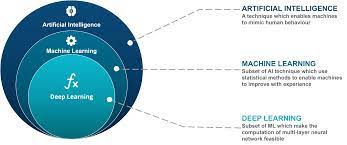The Rise of AI Devices: Revolutionizing Everyday Life
Artificial Intelligence (AI) is no longer just a buzzword or a concept from science fiction. It has become an integral part of the technology that surrounds us daily. AI devices, which are gadgets or appliances that incorporate AI algorithms to perform tasks traditionally requiring human intelligence, are rapidly transforming our personal and professional lives.
Understanding AI Devices
AI devices leverage machine learning, natural language processing, computer vision, and other AI technologies to learn from data and improve over time. These devices can include everything from smartphones with voice assistants to smart home systems that automate lighting and temperature control.
Smart Home Assistants
One of the most ubiquitous examples of AI devices in homes is the smart assistant. Products like Amazon Echo, Google Home, and Apple HomePod have changed the way we interact with technology. They can play music, set alarms, provide news updates, control other smart devices in your home, and even shop online for you—all through voice commands.
Wearable Tech
Wearable technology like fitness trackers and smartwatches are also employing AI to provide personalized insights into health and wellness. They track steps, monitor heart rate, analyze sleep patterns, and offer recommendations to improve users’ lifestyle habits.
AI in Healthcare
In the healthcare sector, AI-powered devices are making significant strides. For example, there are now wearable gadgets that can predict an epileptic seizure before it happens or insulin pumps that automatically adjust insulin levels for diabetes patients based on their real-time needs.
The Impact on Society
The proliferation of AI devices has profound implications for society. On one hand, these devices offer convenience and improved efficiency; on the other hand, they raise important questions about privacy and security as they collect vast amounts of data about users’ habits and preferences.
Ethical Considerations
As we integrate more AI devices into our lives, ethical considerations must be addressed. Issues such as data ownership, consent for data collection and use, as well as algorithmic bias need careful examination to ensure that these technologies benefit all segments of society without infringing on individual rights.
The Future of AI Devices
The future landscape for AI devices looks incredibly promising with advancements in edge computing—where data processing occurs on the device itself rather than in a centralized cloud—leading to faster response times and enhanced privacy. Innovations such as self-driving cars and more sophisticated robots will continue to push the boundaries of what’s possible with artificial intelligence.
Innovation Continues
R&D efforts in both academia and industry are constantly seeking ways to make AI more efficient, ethical, and accessible to everyone. The next generation of AI devices may well be capable of even more complex tasks such as conducting scientific research or providing emotional support for individuals.
Conclusion
The integration of artificial intelligence into everyday devices has begun a revolution with far-reaching consequences. As we stand at this technological crossroads, it is essential that developers design these tools with consideration for their impact while users remain informed about how their data is used. The synergy between humans and machines through these intelligent devices holds the potential not only for smarter living but also for a deeper understanding between technology creators and consumers alike.
Unlocking the World of AI: Understanding Devices, Gadgets, and Technologies Powering Artificial Intelligence in Your Home
- What is an AI home device?
- What are the AI devices?
- What gadgets use AI?
- Is Google an AI device?
- What household appliances have AI?
- What are the 10 types of AI?
- What are examples of AI?
- What are the 4 types of AI technology?
What is an AI home device?
An AI home device is a smart gadget or appliance that incorporates artificial intelligence technology to perform tasks typically requiring human-like perception, decision-making, or problem-solving abilities. These devices are designed to automate and enhance various aspects of home life, such as managing your calendar, controlling lighting and temperature, providing entertainment through music or video streaming, and even assisting with cooking by suggesting recipes or timing your meals. They often feature voice recognition capabilities and can interact with users in a conversational manner, learning from user preferences and behaviors to improve functionality over time. AI home devices are central components of the modern smart home ecosystem, aiming to provide convenience, efficiency, and personalized experiences for users.
What are the AI devices?
AI devices are essentially hardware gadgets or appliances that have been embedded with artificial intelligence technology, enabling them to perform tasks that typically require human-like perception, reasoning, and decision-making. These devices range from everyday items such as smartphones with AI-powered virtual assistants and smart home systems that automate household tasks, to more specialized equipment like autonomous vehicles and advanced medical diagnostic tools. By utilizing machine learning algorithms and other AI methodologies, these devices can learn from data inputs and user interactions to improve their functionality over time, making them increasingly intuitive and efficient at assisting users in a variety of settings.
What gadgets use AI?
AI has permeated a vast array of gadgets, transforming them into smart devices capable of learning and adapting to user needs. Smartphones are equipped with AI to enhance photography, optimize battery life, and power virtual assistants like Siri and Google Assistant. Home automation systems utilize AI for energy-efficient climate control, security monitoring, and even managing household appliances. Wearables such as fitness trackers and smartwatches employ AI algorithms to analyze health data and provide personalized feedback. In entertainment, streaming devices use AI to recommend content based on viewing history, while gaming consoles leverage it for more immersive gameplay. Additionally, cars are becoming increasingly intelligent with AI-driven features like advanced driver-assistance systems (ADAS) for safety and navigation. From kitchen appliances like smart ovens that adjust cooking times to robotic vacuums that learn the layout of your home, the range of gadgets using AI is continually expanding, making everyday tasks more convenient and efficient.
Is Google an AI device?
Google, as a company, is not an AI device but a multinational technology corporation that specializes in Internet-related services and products, which include online advertising technologies, search engines, cloud computing, software, and hardware. However, Google has developed various AI-powered devices and services. For instance, Google Assistant is an artificial intelligence-powered virtual assistant that can be found on smartphones and smart home devices like Google Nest products. These devices leverage Google’s advanced AI algorithms to respond to voice commands, control smart home features, provide real-time information, and assist with daily tasks. Therefore, while Google itself isn’t an AI device, it creates and incorporates AI technology into many of its offerings.
What household appliances have AI?
Many modern household appliances are now embedded with Artificial Intelligence (AI) to enhance their functionality and user experience. Smart refrigerators can track expiration dates, suggest recipes based on contents, and even order groceries when supplies run low. AI-powered ovens can monitor the cooking process, adjust temperatures in real-time for optimal results, and provide recipe recommendations. Washing machines with AI optimize water usage, detergent amounts, and wash cycles based on the load’s weight and fabric type. Robotic vacuum cleaners learn the layout of your home for more efficient cleaning paths and can be scheduled or activated through voice commands. Even air conditioning systems are becoming smarter, using AI to analyze usage patterns and environmental conditions to maintain energy-efficient climate control. These intelligent appliances are transforming homes into connected ecosystems that offer unprecedented convenience and efficiency.
What are the 10 types of AI?
When discussing the “10 types of AI,” it’s important to clarify that AI can be categorized in various ways, such as by capability, functionality, or technology. However, there isn’t a universally recognized classification of “10 types of AI.” For a broad understanding, AI can be divided by capability into three types: Narrow or Weak AI, which is designed for specific tasks; General or Strong AI, which has the understanding and intelligence of a human; and Superintelligent AI, which surpasses human intelligence. Functionality-wise, we can consider systems like reactive machines, limited memory machines (such as self-driving cars), theory of mind AI (which understands emotions), and self-aware AI. Technologically speaking, we could list different applications such as machine learning platforms, chatbots, virtual personal assistants, natural language generation tools, robotic process automation (RPA), image recognition systems, speech recognition platforms, biometrics technology that can identify individuals based on physical characteristics, emotion recognition which interprets human emotions through data inputs like facial expressions or voice intonations and text analytics and NLP (Natural Language Processing) that allow computers to read and understand human language. These categories offer a glimpse into the diverse landscape of artificial intelligence technologies.
What are examples of AI?
Artificial Intelligence (AI) encompasses a wide range of technologies and applications, some of which are now common features in our daily lives. Examples of AI include virtual personal assistants like Siri and Alexa, which use natural language processing to understand and respond to voice commands. Recommendation systems employed by Netflix and Amazon analyze your past behavior to suggest products or media you might enjoy. Autonomous vehicles, such as those developed by Tesla and Waymo, use AI to interpret sensory data and make driving decisions. Chatbots provide customer service by interpreting and responding to written requests. Even email spam filters that keep unwanted messages out of your inbox are a form of AI, using pattern recognition to identify and filter out spam. These examples illustrate how AI is woven into the fabric of modern technology, often working behind the scenes to enhance user experiences and improve efficiency.
What are the 4 types of AI technology?
When discussing AI technology, it is commonly categorized into four types that represent varying levels of machine intelligence. The first type, Reactive Machines, are AI systems that react to specific inputs with predictable outputs and do not have memory-based functionality. An example would be IBM’s chess-playing supercomputer, Deep Blue. The second type is Limited Memory AI, which can make informed decisions by looking at past data as well as the present; most current AI applications, like self-driving cars, fall into this category. The third type is Theory of Mind AI, a more advanced class that understands and processes emotions and social interactions; this level of AI is still in the research phase. Lastly, Self-Aware AI represents the pinnacle of machine intelligence—systems that possess consciousness, self-awareness, and sentience. This type of AI exists only hypothetically and is often featured in science fiction narratives.




